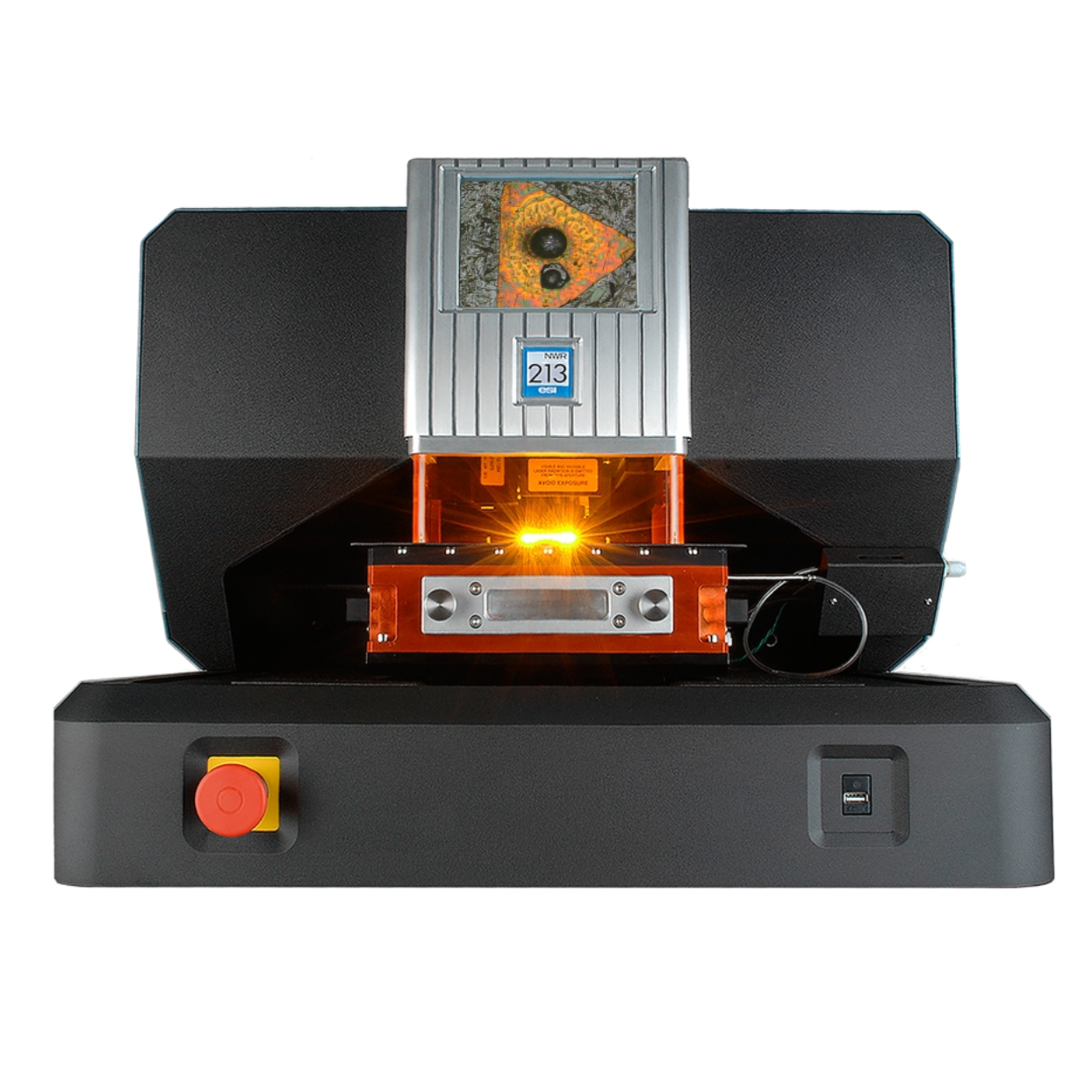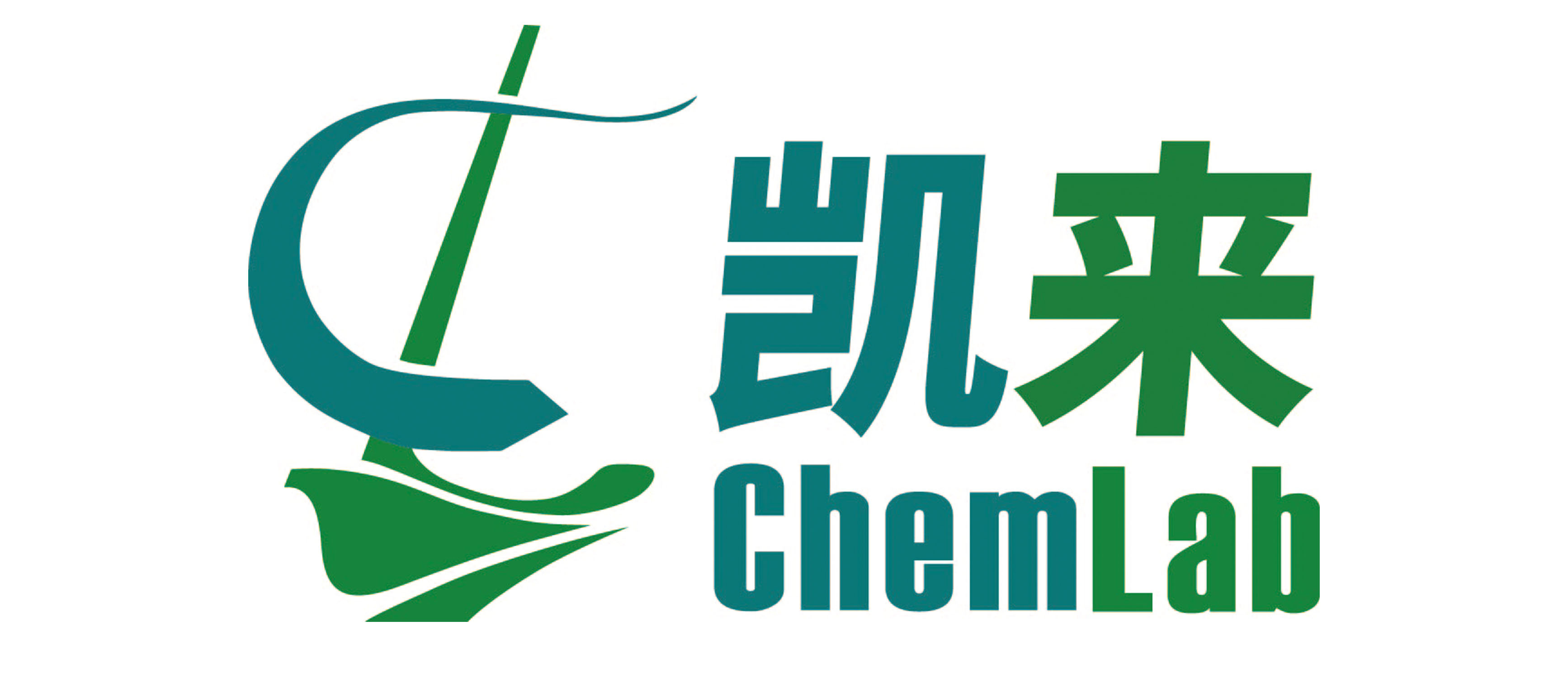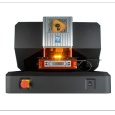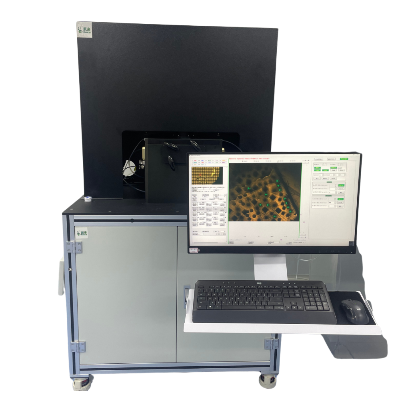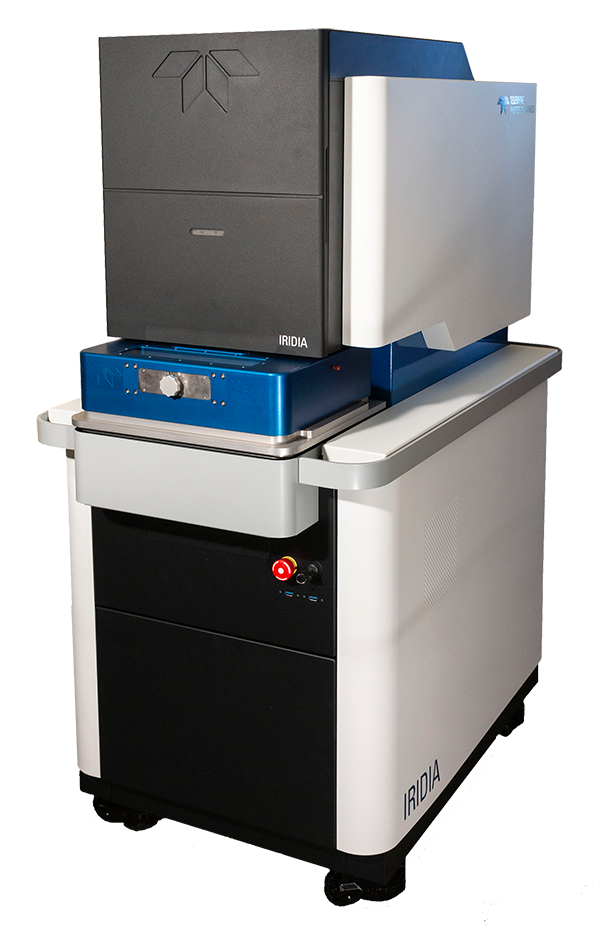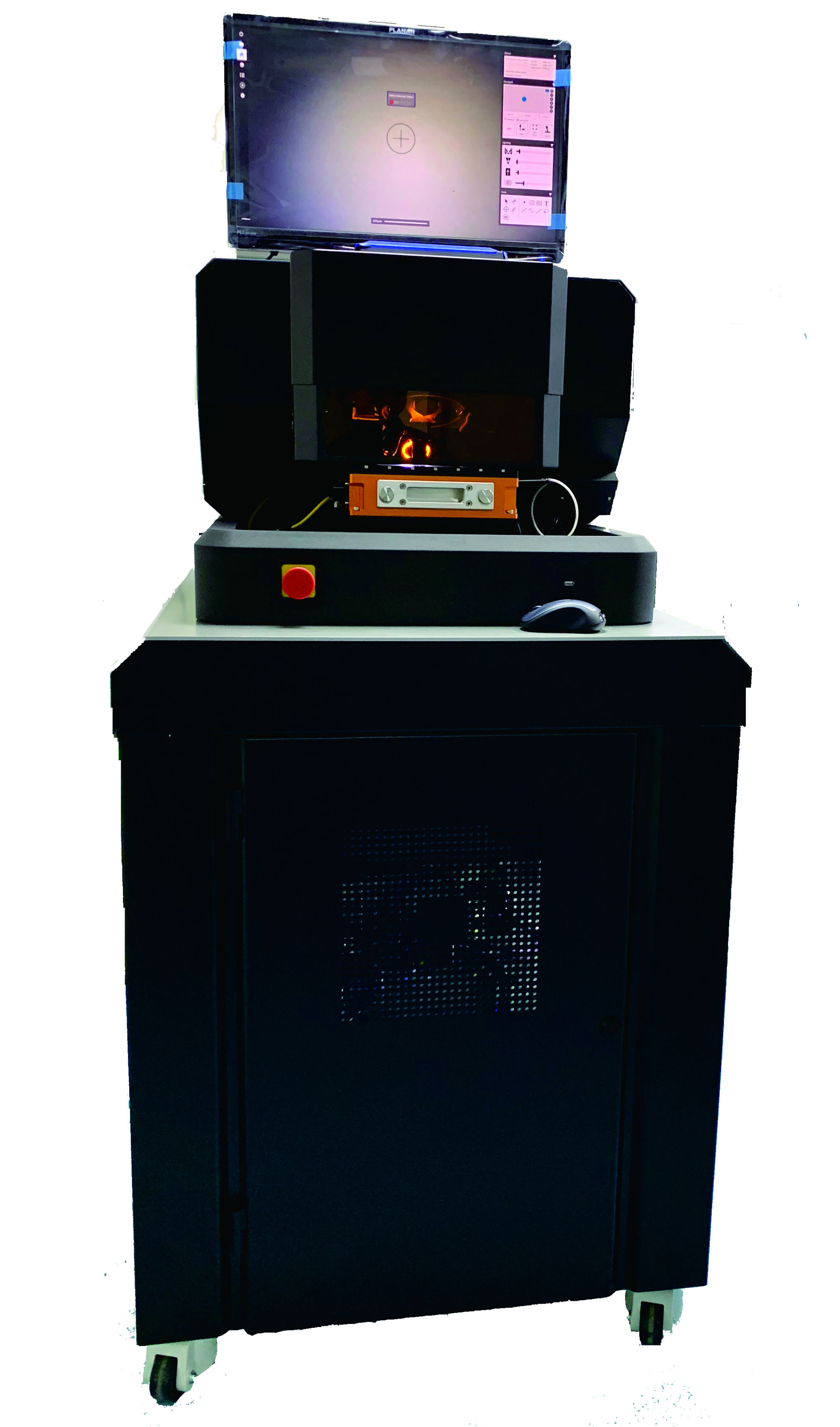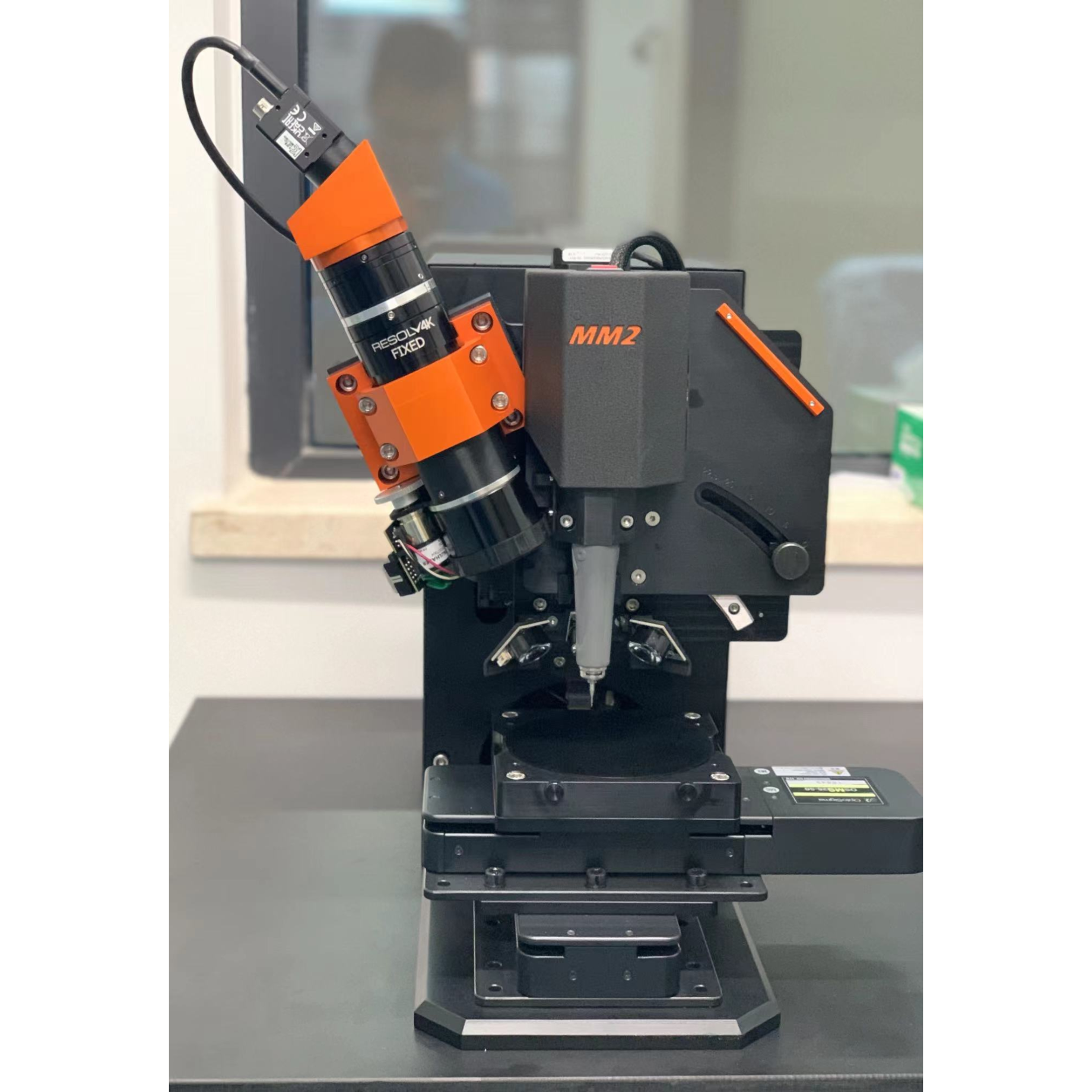方案详情
文
本文建立了利用激光剥蚀-多接受杯电感耦合等离子体质谱(LA-MC-ICP-MS)和高效液相色谱-多接受杯电感耦合等离子体质谱(HPLC-MC-ICP-MS)鉴别药物真伪的新方法。该方法优化了激光剥蚀和色谱分离的条件,并利用氦气作为载气获得更高的灵敏度。利用MC-ICP-MS对不同批次的288个真的药片进行均一性研究,从真的药片中获取了特征性的硫同位素信息。以硅作为内标校正由于仪器质量歧视导致的δ34S的3.6‰偏差及相应的1‰(k=2)的扩展不确定度。利用HPLC分离了药物中的活性成分(API,含硫化合物),利用MC-ICP-MS测定了硫的同位素组成。HPLC-MC-ICP-MS获得的δ34S数据与LA-MC-ICP-MS具有一致性,证明了硫的同位素组成信息是含硫的API固有的。在接下来的工作中,盲测了四百个药片,评估了该技术的区分能力。真假药片的δ34S不确定度值随着三种引入方式变化。三种方法能辨别药片的真伪。该实验中检测出来四组明显的假药片。因此MC-ICP-MS具有快速鉴别药物真伪和分级的应用潜力。
方案详情

View Article Online/ Journal Homepage / Table of Contents for this issueTECHNICAL NOTEwww.rsc.org/jaas|JcJournal of Analytical Atomic Spectrometry View Article Online Detection of counterfeit tablets of an antiviral drug using 834Smeasurements by MC-ICP-MS and confirmation byLA-MC-ICP-MS and HPLC-MC-ICP-MS+ Rebeca Santamaria-Fernandez,*“ Ruth Hearn" and Jean-Claude Wolff Received 19th February 2008, Accepted 9th June 2008 First published as an Advance Article on the web 16th July 2008 DOI: 10.1039/b802890g A new approach for pharmaceutical counterfeit detection using laser ablation multicollectorinductively coupled plasma mass spectrometry (LA-MC-ICP-MS) and high performance liquidchromatography multicollector inductively coupled plasma mass spectrometry (HPLC-MC-ICP-MS)has been developed. Laser ablation and chromatographic separation parameters have been previouslyoptimised and helium has been used as the carrier gas for better sensitivity. A homogeneity study of 288pharmaceutical tablets from different batches of the genuine drug has been performed by MC-ICP-MSand characteristic sulfur isotopic signature has been obtained for the genuine product. 84Smeasurements by MC-ICP-MS using silicon internal standardisation for the correction of instrumentalmass bias effects led to a 834S of 3.6% and an associated combined expanded uncertainty of 1%(k=2).The active pharmaceutical ingredient (API) of the tablets, a S-containing compound, has beenseparated by HPLC and sulfur isotope amount ratios have been measured by MC-ICP-MS. 834S valuesobtained by HPLC-MC-ICP-MS for the genuine tablets agreed with those obtained by laser ablationMC-ICP-MS, thus confirming that the sulfur isotopic signature is inherent to the S-containing API.Following the initial development work, a blind exercise was performed for four hundred tablets. Thediscriminating power of the technique was assessed and uncertainties associated to 84S values forcounterfeit and genuine tablets varied depending on the sample introduction technique utilised. Thethree approaches were able to differentiate genuine from counterfeit tablets. During the exercise, fourdistinct groups of counterfeit tablets were detected. The MC-ICP-MS method therefore has potential asa rapid screening tool for pharmaceutical counterfeit detection and classification. Introduction The counterfeiting of pharmaceuticals has been detected since1990 and, recently, the problem has escalated. The World HealthOrganization (WHO) has defined counterfeit drugs as thosewhich are deliberately mislabelled with respect to identity and/orsource. Counterfeiting can apply to both branded and genericproducts with counterfeit products including drugs with thecorrect ingredients or with the wrong ingredients; without theactive pharmaceutical ingredient (API), with insufficient API orwith fake packaging. The WHO estimates that counterfeits, which now account for10% of the global market, cost the pharmaceuticals industryUS$46 billion annually. This value is expected to increase toUS$75 billion by 2010.2 The cost to patients receiving counterfeitmedicines instead of genuine is difficult to estimate and it couldhave harmful consequences for patients. “LGC, Queens Road, Teddington, Middlesex, UK TW11 0LY. E-mail: ( rsf@lgc.co.uk‘GlaxoSmithKline, Medicines Research Centre , Gunnels Wood R oad,Stevenage , UK SGI 2NYtP r esented at the 2 008 W inter Conference on Plasma Sp e ctrochemistry, ) ( T emecula, CA, U SA, January 7-12, 2008. ) Anti-counterfeiting analytical methods range from simplecolorimetric methods’ to more sophisticated techniques suchas near-infrared spectroscopy (NIR)45 NIR chemical imagingandliquid chromatography-mass spectrometric (LC-MS)approaches. The publication by Deisingh’ gives a good overviewof the analytical methodologies/techniques employed. It has beensuggested that stable isotopic ‘fingerprints’of pharmaceuticalscan be used as a tool for detecting counterfeits.9,10 Stable isotopesare non-radioactive and exist naturally in drugs such as anti-malarial, antibiotic and analgesic drugs and therefore no externalreagents are required; thus making the procedure simple andattractive to the end-user. Relative differences in sulfur isotopic abundances, observed inS-containing compounds from different sources, mainly resultfrom the reduction of sulfate ions by anaerobic bacteria whichexcrete H2S enriched in the lighter S isotopes. This variability hasbeen exploited in several applications including the identificationof water sources,10,12 the differentiation of organic and conven-tional farming fed cattle,13 the study of volcanic gas fluxesl4 etc.Counterfeiting techniques are increasingly more sophisticatedwith current counterfeits containing, in some cases, the samecompounds as the genuine tablets and therefore elementalcomposition is very similar. Approaches based on the measure-ment of small isotopic variations in S-containing compounds present in both the genuine and the counterfeit tablets aretherefore of high interest. In this work, a comprehensive study for a given pharmaceu-tical drug has been performed for sulfur isotopic ratios byMC-ICP-MS using three different approaches for sample intro-duction to the plasma: direct liquid introduction, solid laserablation and HPLC separation. This signature 84S value andassociated uncertainty has been compared to that of suspectcounterfeits and also to the signature of the extracted API. Themethod has therefore great potential as a screening tool forpharmaceutical counterfeit detection. Moreover, this data couldbe combined with trace metal profiling and other stable isotoperatio measurements to achieve an even greater power ofdiscrimination.834S relative values are based on n(34S)/n(32S) measurements.The historical reference material for these measurements, CDTtroilite (FeS) from the Canon Diablo Troilite meteorite5 is nolonger easily obtained and its isotopic composition in 834S hasshown to vary by as much as 0.4%6Consequently, in 1993 theInternational Atomic Energy Agency (IAEA) advisory group(Vienna, 1993) recommended that the Ag2S reference material The precision of the ratio measurements by MC-ICP-MS isIAEA-S-1 be assigned a 84S value of exactly -0.3%, thus considerably superior to those made by peak jumping ICP-MS.25establishing a Vienna-Canon Diablo Troilite (V-CDT) scale.17 Instrumental precision is a major contributor to the combinedSince 1995 it is recommended that all data for sulfur isotope uncertainty of the delta value. This explains the improvement oncomposition should be reported as 834S values related to the uncertainties compared to those obtained by previousV-CDTl8 according to eqn (1). authors23,24 using ICP-MS for the measurement of sulfur isotopicvariations. There are also a number of polyatomic ions whichinterfere with 32S+, 34S+,28Sit,29Sit and 3Sit which can easily beresolved by operating the Neptune at medium resolution. Themethod used and the correction of instrumental mass biasapplied using Silicon have been described in detail elsewhere.10,22The method used for measurements in transient signals monitorsSit, 30Sit, 32S+ and 34S+ isotopes within the same faraday cupconfiguration. This faraday cup setting allows simultaneousmeasurement of silicon and sulfur isotopes in transient signals.Note that in this work mass bias is considered to be entirely dueto instrumental effects and that mass discrimination is a differentphenomenon, arising from biological, physical or chemicalprocesses.28 Regarding the operating conditions for the MC-ICP-MS, it is important to note that the gas flows were optimiseddepending on the sample introduction approach and the voltagesapplied to focus and dispersion lenses varied for the HPLCmeasurements (focus: -5 V; dispersion: 15 V). In practice 834S values are then calculated according to theequation: Where: 834Sv-CDT Sample is the measured 834S on the V-CDT scale forthe sample (4S :32S)Sample is the measured ratio for the sample (4S:32S)wsTD is the measured ratio for the working standard And 834Sv-cDT WST'DS TiDs Rthe assigned 834S value on the V-CDTscale for the working standard used in the calculation. There are several 84S standards covering a range of +34 to-32%and ranging in composition from elemental sulfur toAg2S, barite and sphalerite. In the past, other authors have useddifferent reference materials such as Soufre de Lacq (NISTRM8553), IAEA-S1 Silver Sulfide (NIST RM8554) and NBS-123 Sphalerite (NIST RM8556) as working standards.10,20,21 Thisapproach relies on “reference values” and the way delta valuesare calculated and it has been described elsewhere.10,22 The use of ICP-MS for the measurement of sulfur isotopeamount ratios has become a relatively widespread analyticaltechnique.23-25 Moreover, the use of MC-ICP-MS for deltameasurements has improved precision limitations, enablingprecise measurements of isotope amount ratios with instrumentalprecision between 0.1% to <0.005%.26 Clough et al.1 havedemonstrated the potential of MC-ICP-MS as a high throughput tool for 834S measurements for bulk aqueous and solid samplesusing Si as an internal standard. In this work, three different approaches for sample introduc-tion to MC-ICP-MS have been used to demonstrate the potentialof the method as a screening tool for homogeneity and authen-ticity studies for a given pharmaceutical drug and for thedetection of suspect counterfeit tablets of the genuine product. Experimental Instrumentation Multicollector ICP-MS. All measurements were performedusing a MC-ICP-MS (Neptune MC-ICP-MS, ThermoFinnigan,Bremen, Germany). The Neptune has an argon plasma ionsource, forward Nier-Johnson geometry and nine Faradaydetectors. The axial Faraday can be inter-changed witha secondary electron multiplier (SEM) enabling detection belowthe normal operating range of the Faradays. Further details ofthe instrument design may be found elsewhere.2 Laser ablation system. A commercially available UP-213 LaserAblation System (New Wave Research Inc., Huntingdon,Cambridgeshire,UK) operating in the deep UV (213 nm) wasemployed using helium as a carrier gas due to its improvedablation and transport characteristics. Si was added, afterultrasonic nebulisationanddesolvationn((USN CETACU-6000AT+, CETAC Technologies, Omaha, Nebraska, USA)via a plastic ‘Y'-piece (Fisher Scientific, Loughborough, Leices-tershire, UK) to the He carrier stream post-ablation. Ablationparameters were optimised and are shown in Table 1. HPLC system. For the chromatographic separation of the APIof the pharmaceutical tablet, an octadecyl phase based reversephase column, Supelco Discovery@BIO Wide-Pore C18(Supelco, Sigma-Aldrich, Dorset, UK) was used. Ammonium Table 1UP-213 Laser ablation parameters for the measurement of 84Sin antiviral tablets. Parameters were optimised for best sensitivity andprecision of S isotope amount ratio measurements Ablation mode Continuous Spot size10 um Frequency 20 Hz Laser output 100% Carrier flow rate He 0.7 mL min - Table 2 Chromatographic conditions for the separation of the API inthe antiviral tablets Column Supelco Discovery@ BIO Wide Pore C18 HPLC column 5 um particle size, 15 cm ×2.1 mm (length xI.D.) Injection loop 50 pL Flow rate 0.1 mL min-1 Mobile phase 10 mmol L-ammonium acetate buffer (pH 6.5) in 10% (v/v) methanol acetate from Sigma-Aldrich was selected as the mobile phase forthe separation. HPLC-grade methanol was purchased fromMerck (Merck, Darmstadt, Germany). All other reagents were ofanalytical reagent grade. HPLC buffers were freshly preparedand de-gassed with helium prior to use. The HPLC system was coupled to the MC-ICP-MS and thetwo way valve was automatically set to direct the peak elutedbetween 5 and 6 min to the plasma. Silicon was added continu-ously to the MC-ICP-MS. The API pure substance was alsoinjected for comparison purposes and the retention time agreedwith that of the S-containing compound in the bulk tablet. Thechromatographic conditions used for the separation of API inthe tablet solution are summarised in Table 2. 10 mg of the tabletwere dissolved in 10 mL of 10% (v/v) methanol. The column wasconnected to a Dionex Ultimate HPLC pump (DIONEX,Surrey, UK) equipped with a Rheodyne injector (100 pl). TheAPI was eluted within 6 min and introduced to the plasma by anAr carrier flow of 1 mL min-. Silicon was added post column forcorrection of mass bias effects. Reagents, standards and samples High purity reagents were used unless otherwise stated. Waterwas taken directly from an 18.2 MOcmsupply (Elga Ltd, HighWycombe, UK). The following sulfur reference materials wereused in this study: NIST RM8553:Soufre De Lacq-Elemental Sulfur, 834S=16±0.3 (%) NISTRM8556: NBS 123 Sphalerite,84S=17.44±0.3(%) NIST RM8554: IAEA-S1 Silver Sulfide,834S=-0.3±0.3(%)Two reference values are given for RM8553. This work adoptsthe 834S value of +16±0.3%.NISTRM8553 was selected as themain working standard.NIST RM8554 and NIST RM8556 wereused to evaluate instrumental performance. Each referencematerial was independently prepared by digesting an aliquot ina closed vessel microwave digester (Multiwave 3000, PerkinElmer, Beaconsfield, UK) with high purity HNO3 acid (ROMIL,Cambridge,UK) and subsequent dilution with high purity water. 8S measurements by MC-ICP-MS 10 mg of the bulk antiviral pharmaceutical tablet were dissolvedin 10 mL of 1% HNO for direct sample introduction measure-ments. Silicon was added to each solution at approximately 5 pgg-to correct mass bias effects. NIST RM8553 was used as theworking standard for 834S measurements. A solution containingNIST RM8553 and silicon was analysed every 5 samples. The Sistandard source was an Assurance Spex CertiPrep ICP (1000 pgg) standard solution (Spex CertiPrep Ltd, Middlesex, UK). 417tablets were received, three tablets from each production batch.34S : 32S isotope amount ratios were measured for each solution(n=417). NIST RM8554 and NIST RM8556 were also analysedto monitor the performance of the instrument at both ends of therange of variation in 84S. Instrumental mass bias correction The instrumental mass bias of the measured 34S : 32S isotopeamount ratio (34S:32SMES) was corrected by interpolation of themass bias observed for the 30Si : 28Si isotope amount ratio usingthe Russell correction expression," which corrects for mass biason the basis of the absolute mass of the isotope pairs and hasbeen shown to yield the best data for ICP-MS studies.28 Instru-mental mass bias expressed as the difference between observedisotope amount ratios and measured isotope amount ratios wastypically 8%. The same correction expression was used to correctfor mass bias when monitoring 3Si : 29Si ratios for the HPLC-MC-ICP-MS measurements. Measurement of uncertainty The uncertainty of each delta value was calculated in accordancewith ISO GUM (ISO Guide to the Expression of Uncertainty inMeasurement) guidelines.30,31 Combined uncertainties Werecalculated following Kragten spreadsheet method taken intoaccount instrumental performance, eqn (1) and eqn (2) used tocalculate 834S and the uncertainty associated to reference mate-rials used in the calculation. 8S measurements in transient signals The conditions for the chromatographic separation were opti-mised and the API was isolated and directed to the plasma.Measurements were performed simultaneously for 32S, 34S, 2Siand30Si. The classical approach for the determination of isotopeamount ratios in transient signals using scanning mass spec-trometers is the full peak integration followed by the calculationof the peak area ratio of the integrated peak areas obtained forthe respective isotopes.33 In that case, an indicator of the dataprecision is the external precision expressed as the reproducibilityfrom several replicate injections of the same sample or repeatedruns. When using a multicollector ICP-MS, the internal precisioncan be evaluated during peak elution due to the simultaneousmeasurement process for all isotopes,4 the internal precision canthen be used to calculate the uncertainty ofthe measurement andcompare data with that obtained on continuous signals. It hasbeen reported that in some cases it is better to evaluate part ofthetransient signal rather than the total signal.35 For example, whenusing MC-ICP-MS more precise results are obtained when calculating the ratio from at least 9 points per peak than if thewhole peak is considered and at least 10 points per peak whenusing quadrupole ICP-MS.36 In this work, sulfur isotope amountratios were then measured on transient signals and results werecalculated using 10 points at the peak apex of the API, 3Si:29Siisotope amount ratios were measured in continuous mode andused to correct for instrumental mass bias effects. Results and discussion 8S Homogeneity study of pharmaceutical tablets byMC-ICP-MS & identification of suspect counterfeit tablets byMC-ICP-MS As part of the blind study, 417 tablets were received (3 tabletsfrom each batch, n= 139) from the pharmaceutical collaboratorand the authenticity of those were unknown. The potential of themethod as an authenticity-screening tool was then tested with thesample suite. Fig. 1 shows the results from three tablets from each batch.The majority of the tablets (n =96) showed a typical 834Ssignature of 3.6%。, with an expanded uncertainty of 1%(expanded combined uncertainty for n = 96 batches of produc-tion, k=2). Thus, those tablets were identified as the genuineproduct. The measurements confirmed the S isotopic homoge-neity of the genuine product within production batch (3 tabletsfrom the same production batch were measured and averageresults are shown) and between batch (96 different batches intotal) with a typical range of variability of±1 23 tablets appeared to have a different 84S signature from thatof the genuine tablets and therefore they were identified assuspect counterfeits. 10 tablets presented a 84S value below theexpected genuine value ranging from -8.8%。 to 1%, 13 tabletspresented values over 3.6%。 ranging from 5.6% to 33.8%20tablets appeared to have no sulfur in their formulation andtherefore those were quickly identified as counterfeits. Pharma-ceutical collaborators confirmed the findings. Tablets received were then classified in three different groups:S-containing tablets presenting characteristic 84S signature (n=96), S-containing tablets with a different 834S signature (n=23)and non S-containing tablets (n = 20) (those counterfeits not containing API or any other S compound). Fig. 1 shows 834Svalues for those S-containing tablets. 23 tablets were thereforeidentified as potential counterfeits. Four potential groups wereobserved within the counterfeits and they can be seen in Fig. 1. 834S measurements of the authentic API and suspect counterfeitsby HPLC-MC-ICP-MS Transient signal profiles for 32S and 34S isotopes and continuoussignal for Si and 3Si isotopes are shown in Fig. 2. The precisionof measured isotope amount ratios was then included in theuncertainty calculations following Kragten spreadsheet.2 Fig. 3 shows results from HPLC-MC-ICP-MS measurementsfor two suspect counterfeit samples and the range of authenticityfor 84S from 5 genuine tablets. All tablets contain the S-con-taining API. The 84S authenticity range was found to be within3.2%。±1.7%。 (expanded uncertainty, k=2). The fact that thesignature from the isolated API from the genuine tablets agreeswith that of the bulk tablet solution confirms that the S isotopic Fig. 2Transient signal profile for S and 32S obtained after HPLCseparation of the active pharmaceutical ingredient from antiviral tablets.Silicon isotopes: 2Si and 3Si are measured in continuous flow. 34S : 32Sratios are also plotted in the graph. Sample Id Fig.1834S measurements by MC-ICP-MS for the antiviral drug tablets. Error bars represent combined expanded uncertainty (k=2), measurementswere performed in triplicate for each tablet. 96 tablets were found to be genuine and 23 tablets were identified as potential counterfeits. The authenticityrange was defined from 2.6% to 4.6% Fig. 3 834S authenticity ranges obtained when using the differentapproaches and results for counterfeit tablets: counterfeit #17, #18 and#19. Error bars represent combined expanded uncertainties (k =2) foreach tablet, measurements were performed in triplicate. The authenticityrange for HPLC-MC-ICP-MS measurements was defined from 1.5%to4.9%(n=5). The authenticity range for LA-MC-ICP-MS measurementswas defined from 2% to 5%(n=5). signature is inherent to the API. The suspect counterfeit tabletspreviously detected by MC-ICP-MS presented signatures thatdiffered from that of the genuine product and therefore theirnon-authenticity was confirmed. 84S measurements of authentic and suspect counterfeits byLA-MC-ICP-MS Five genuine and two suspect counterfeit tablets were placed inthe ablation cell and ablated in a random order. Measurements were performed in triplicate under optimumablation conditions summarised in Table 1. It has been reportedthat laser ablation might cause isotopic fractionation, in additionto that caused by the ICP-MS instrument.’ In this work, siliconwas added after ultrasonic nebulisation and all isotopes weremeasured simultaneously. 34S: 32S and 30Si : 28Si isotope amountratios were monitored throughout time for 5 genuine tablets andtwo suspect counterfeits (previously identified by MC-ICP-MS)and results for 84S are shown in Fig. 3. 834S value for theauthentic tablets was found to be within 3.5%。±1.5%, agreeingwith previous authenticity ranges found when using MC-ICP-MS and HPLC-MC-ICP-MS, thus ruling out the possibility ofisotopic fractionation induced by laser ablation and confirmingthe suspect counterfeits. Comparison of the three approaches It is important to emphasise that the three different approachesused for sample introduction lead to overlapping authenticityranges and therefore any of those approaches would be suitablefor counterfeit detection of the antiviral drug. From this work, itis clear that the S isotopic signature is inherent to the API and itis maintained in the bulk tablet. It has also been confirmed thatno fractionation processes affect the measurement whencoupling a laser ablation system to the multicollector for 834Smeasurements in this antiviral drug. Fig. 3 shows authenticityranges obtained when using all the approaches and results forthree counterfeit tablets: counterfeit #17, #18 and #19. The uncertainty associated to each of the approaches used for theisotope ratio measurements has been calculated and the directsample introduction approach leads to smaller uncertainties, thisis mainly due to the simplicity of the system. The measurement ofisotope amount ratios in transient signals in the authentic tabletsleads to worse uncertainties mainly due to the instrumentalprecision on a transient signal varying throughout peak elution,thus affecting the overall uncertainty of the measurement.Uncertainties obtained when using the LA approach for thegenuine tablets are worse than that of the liquid introductionapproach mainly due to the heterogeneity of the tablet andadditional bbackground noise. Differences in 834S isotopicsignatures and the uncertainties obtained for the counterfeittablets when using direct liquid introduction, HPLC or LAapproaches might be mainly due to the heterogeneity of thosetablets. Conclusions A new approach for pharmaceutical counterfeit detection of anantiviral drug using MC-ICP-MS has been reported and itspotential as a tool for pharmaceutical authenticity screening hasbeen demonstrated. The authenticity range for84S in the genuine tablets wasobtained using three approaches for sample introduction: liquid,LA and HPLC, in all cases the authenticity ranges for 8Soverlapped and therefore all approaches would be suitable forauthenticity screening of the drug. The HPLC approach involvedseparation of the API and measurement by MC-ICP-MS,whereas the LA and the liquid approach focused on measure-ments in the bulk tablet. In this case the sulfur isotopic signaturehas been found to be inherent to the API and it is maintained inthe bulk tablet and therefore any of those approaches can beapplied to counterfeit detection. The three approaches were able to differentiate genuine fromcounterfeit tablets. During the exercise, four distinct groups ofcounterfeit tablets were detected. The MC-ICP-MS method hastherefore potential as a rapid screening tool for pharmaceuticalcounterfeit detection and classification. Combination of isotopicdata with trace metal, NIR data etc. could be used to source thecounterfeiting labs. Acknowledgements The work described in this paper was supported by the UKDepartment for Innovation, Universities & Skills as part of theNational1MeasurementtSystemn(Chemical & BiologicalMetrology Knowledge Base Programme. The authors would liketo thank Milena Quaglia and Justo Giner Martinez-Sierra forhelp and advice on HPLC separation. References 1 http://www.who.int/mediacentre/factsheets/fs275/en/index.htm1.2 http://www.who.int/medicines/services/counterfeit/impact/ImpactF_S/en/. 3 M. D. Green, D. L. Mount, R. A. Wirtz and N. J. White, J. Pharm.Biomed. Anal., 2000, 24,65-70. ( 4 S. H . Scafi and C. Pasquini, Analyst, 2001, 126,2218-24. ) ( 5 M. J . Vredenbregt, L. Blok-Tip, R. Hoogerbrugge, D. M. B arendsand D. de Kaste, J. Pharm. Biomed. A nal.,2006, 40, 840-49. ) ( 6 J . D ubois,J.C. Wolff, J. K. Warrack, J. Schoppelrei a nd E. N. Lewis, Spectroscopy, 2007, 22,40-50. ) ( 7K . A. Hall,P. N. N e wton, M. D. Green, M. De V eij, P. Vandenabeele,D. Pizzanelli , M . Mayxay, A . Dondorp and F. M. F e rnandez,Am . J.Trop. Med. Hyg., 2006,75,804-11. ) ( 8 A. K . D eisingh, Analyst, 2005, 130, 2 71- 7 9. ) ( 9 J. P. Jasper, B. J. Westenberger, J . A . S pencer, L. F . Buhse an dM . J. N asr, J. P harm. Biomed. An a l., 2004, 35 , 21-30 . ) ( 10 R . C lough, P . Evans, T . C a tterick and E. H. Ev a ns, An a l. Chem.,2006,78,6126-32. ) ( 11 K . R osman and P. D. P. Taylor, Pure Appl. C h em., 1998, 70, 2 1 7.12 D. M . Allen, Ground Water, 2004,42, 1 7 -31. ) ( .13 M. Boner and H. Forstel, A nal. Bioanal. Chem., 2004, 378,301-10. ) ( 14 H. Sakai, T. J. Casadevall and J. G. Moore, Geochim. C o smochim Acta, 1982,46,729-38. ) ( 15 M.L . Jensen a nd N . Nakai, Science,1961,134,2102- 0 4. ) ( 16 G. Beaudoin, B. E . T aylor, D. Rumble a n d M . H. Thiemens, G eochim. C osmochim. A c ta, 1 9 94, 58. ) ( 17 B . W. Robinson, Proceedings ofa C o nsultants Meeting, Vienna (A)1-3 December, 1993, p . 13. ) ( 18 H. R. Krouse a nd T . B . C oplen, P ure A ppl. C hem., 1 997, 69,293-95. ) 19 T. B. Coplen, J. A. Hopple, J. K. Bohlke, H. S. Peiser, S. E. Rieder,H. R. Krouse, K. J. R. Rosman, T. Ding,R. D. Vocke,K. M. Revesz, . Lamberty, P. Taylor and P. De Bievre,elements in naturally occurring terrestrial materials and reagents,Water resource investigation report USGS, 2003,01,4222. 20 P. R. D. Mason, J. Kosler, J. C. M. de Hoog, P. J. Sylvester andS. Meffan-Main, J. Anal. At. Spectrom., 2006, 21, 177-86. 21 J. L. Mann and W. R. Kelly, Rapid Commun. Mass Spectrom., 2005,19,3429-41. ( 22 R. Santamaria-Fernandez and R. Hearn, Rapid Commun. M a ssSpectrom.,2008, 22,401-08. ) 23 P. R. D. Mason, K. Kaspers and M. J. van Bergen, J. Anal. At.Spectrom., 1999, 14, 1067-74. 24 P. Evans, C. Wolff-Briche and B. Fairman, J. Anal. At. Spectrom.,2001,16,964-69. 25 T. Prohaska,C. Latkoczy and G. Stingeder, J. Anal. At. Spectrom.,1999,14,1501-04. ( 26 G . Nowell, D. Pearson, C. Ottley, J. Schwieters, D. Dowall, in PlasmaSource M ass Spectrometry, A pplications and Emerging T echnologies, ed. G. H olland a nd S. Tanner, Royal S o ciety, C ambridge, 2 0 03, ISBN 0-85404-603-8. ) ( 27 S . Weyer and J. Schwieters, I nt. J . Mass Spectrom., 2 003,226,355-68. ) ( 28 C . P . I ngle, B. L. Sharp, M. S. A. H o rstwood, R. R. Par r ish andD. J . Lewis, J. Anal. At. Spectrom.,2003, 18, 219-29. ) ( 29 D . G unther and C. A. Heinrich, J. An a l. At . Sp e ctrom., 19 9 9, 14 , 1363-68. ) 30 Guide to the Expression of Uncertainty in Measurement. Internationalorganisation for standardisation (ISO), Geneva, 1995. 31 Quantifying uncertainty in analytical measurements, 2nd Edition,Eurachem, 2000, Accessible through Eurochem 2000 website:http://www.Eurachem.ul.pt,2000. ( 32 J . Kragten, Analyst, 1 994, 1 19, 2161-65. ) ( 33 P. Rodriguez-Gonzalez,J.M. Marchante-Gayon,J. I. Garcia Alonsoand A . S anz-Medel, Spectrochim. Acta, Part B, 2005, 60, 151 - 207. ) ( 34 S.Garcia-Ruiz, M. Moldovan and J.I. G a rcia-Alonso, J. A nal. At. Spectrom.,2008, 23, 84- 9 3. ) ( 35 S . Wehmeier,R. Ellam and J. Feldmann, J.Anal. At. Spectrom., 200 3 , 18, 1001-07. ) 36 M. Vazquez- Pelaez, J. M. Costa-Fernandez and A. Sanz-Medel,J. Anal. At. Spectrom., 2002, 17,950-57. ( 37 S .E. Jackson andD. Gunther,J.Anal. At. Spectrom.,2003,18,205-12. ) This journal is C The Royal Society of Chemistry . Anal. At. Spectrom., This journal is O The Royal Society of Chemistry . Anal. At. Spectrom., 本文建立了利用激光剥蚀-多接受杯电感耦合等离子体质谱(LA-MC-ICP-MS)和高效液相色谱-多接受杯电感耦合等离子体质谱(HPLC-MC-ICP-MS)鉴别药物真伪的新方法。该方法优化了激光剥蚀和色谱分离的条件,并利用氦气作为载气获得更高的灵敏度。利用MC-ICP-MS对不同批次的288个真的药片进行均一性研究,从真的药片中获取了特征性的硫同位素信息。以硅作为内标校正由于仪器质量歧视导致的δ34S的3.6‰偏差及相应的1‰(k=2)的扩展不确定度。利用HPLC分离了药物中的活性成分(API,含硫化合物),利用MC-ICP-MS测定了硫的同位素组成。HPLC-MC-ICP-MS获得的δ34S数据与LA-MC-ICP-MS具有一致性,证明了硫的同位素组成信息是含硫的API固有的。在接下来的工作中,盲测了四百个药片,评估了该技术的区分能力。真假药片的δ34S不确定度值随着三种引入方式变化。三种方法能辨别药片的真伪。该实验中检测出来四组明显的假药片。因此MC-ICP-MS具有快速鉴别药物真伪和分级的应用潜力。
确定



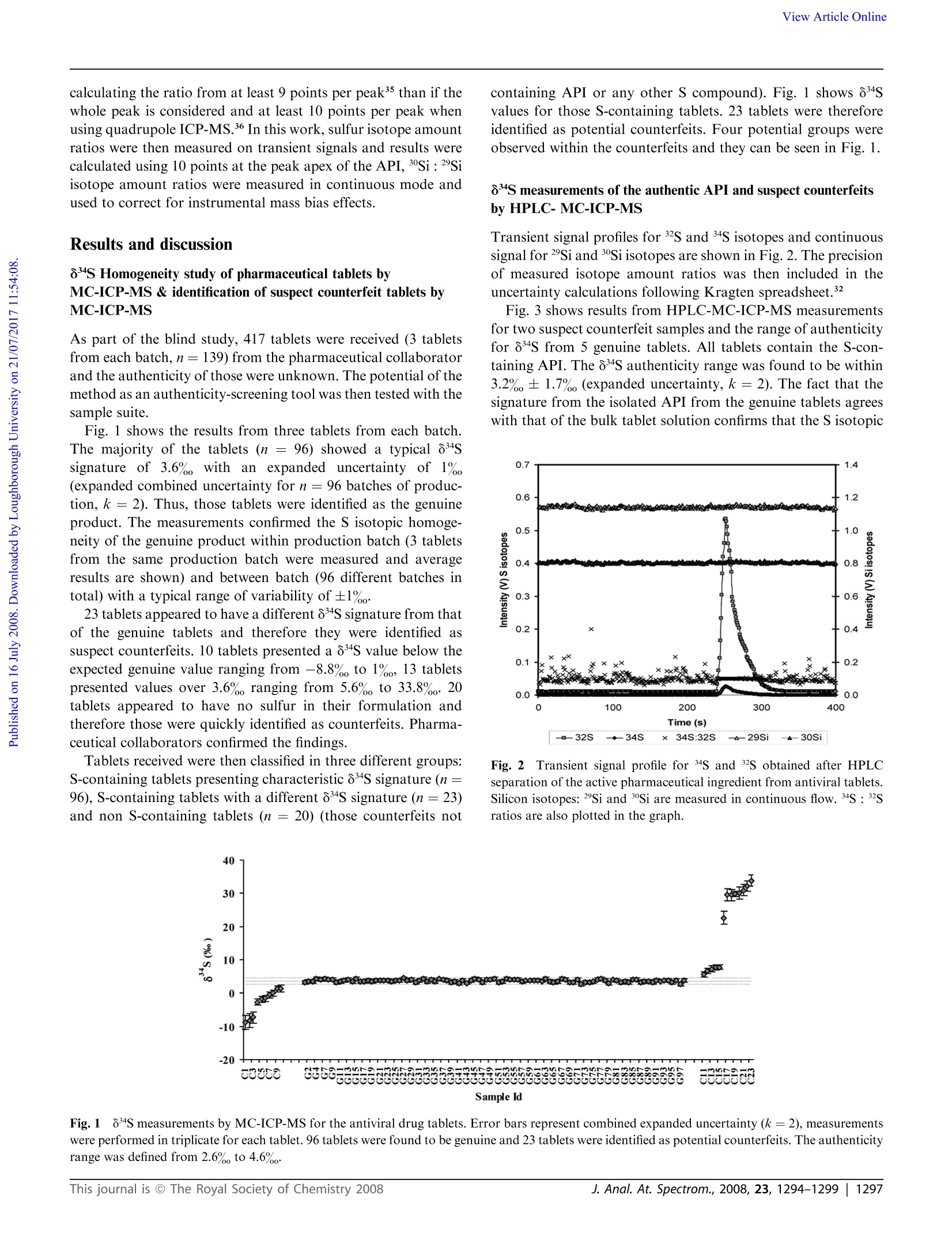


还剩4页未读,是否继续阅读?
上海凯来仪器有限公司为您提供《抗病毒药物中药物真伪检测方案(激光剥蚀进样)》,该方案主要用于化药制剂中放射性及其他检定检测,参考标准--,《抗病毒药物中药物真伪检测方案(激光剥蚀进样)》用到的仪器有ESL213 灵活的激光剥蚀系统
推荐专场

